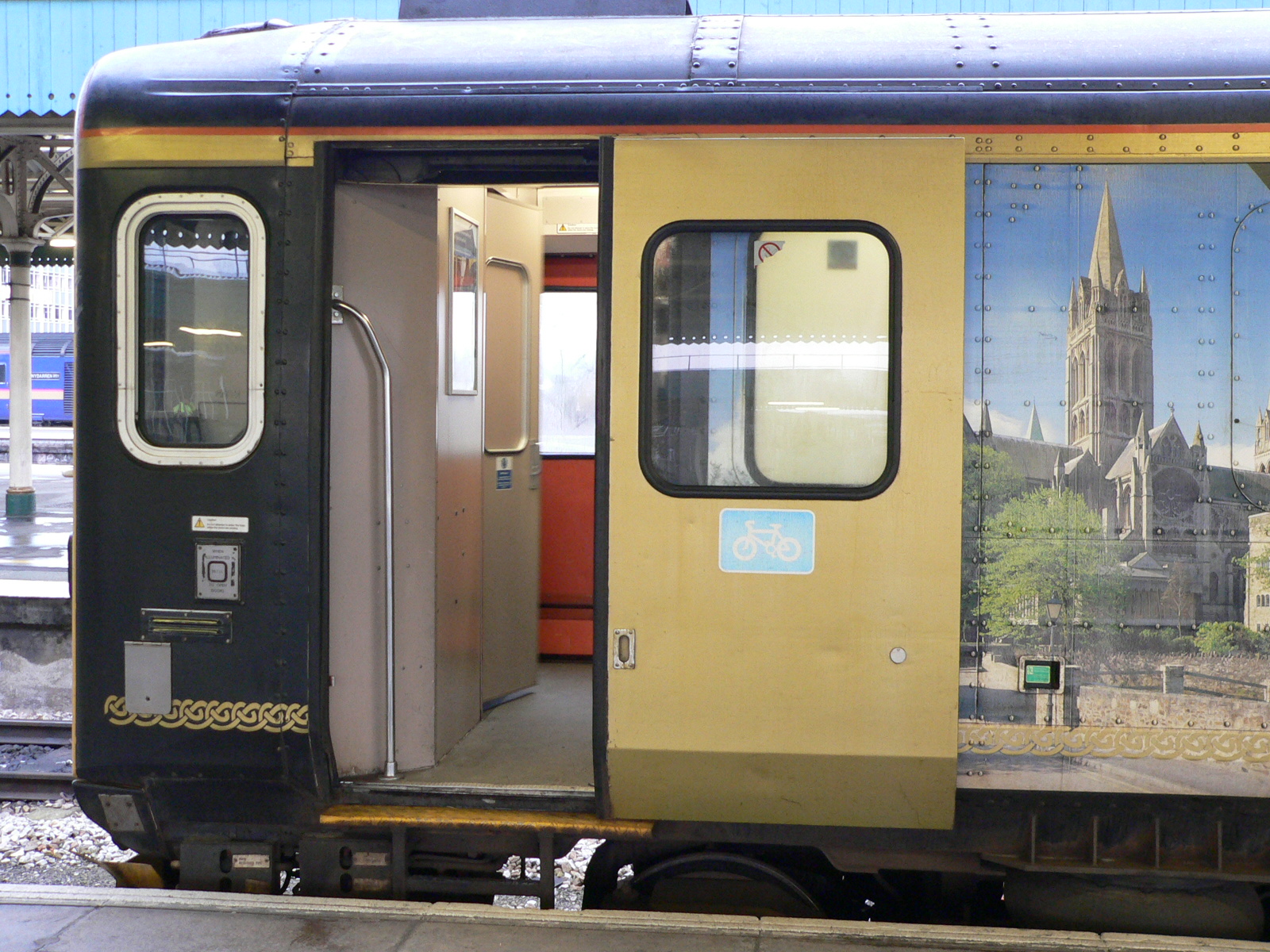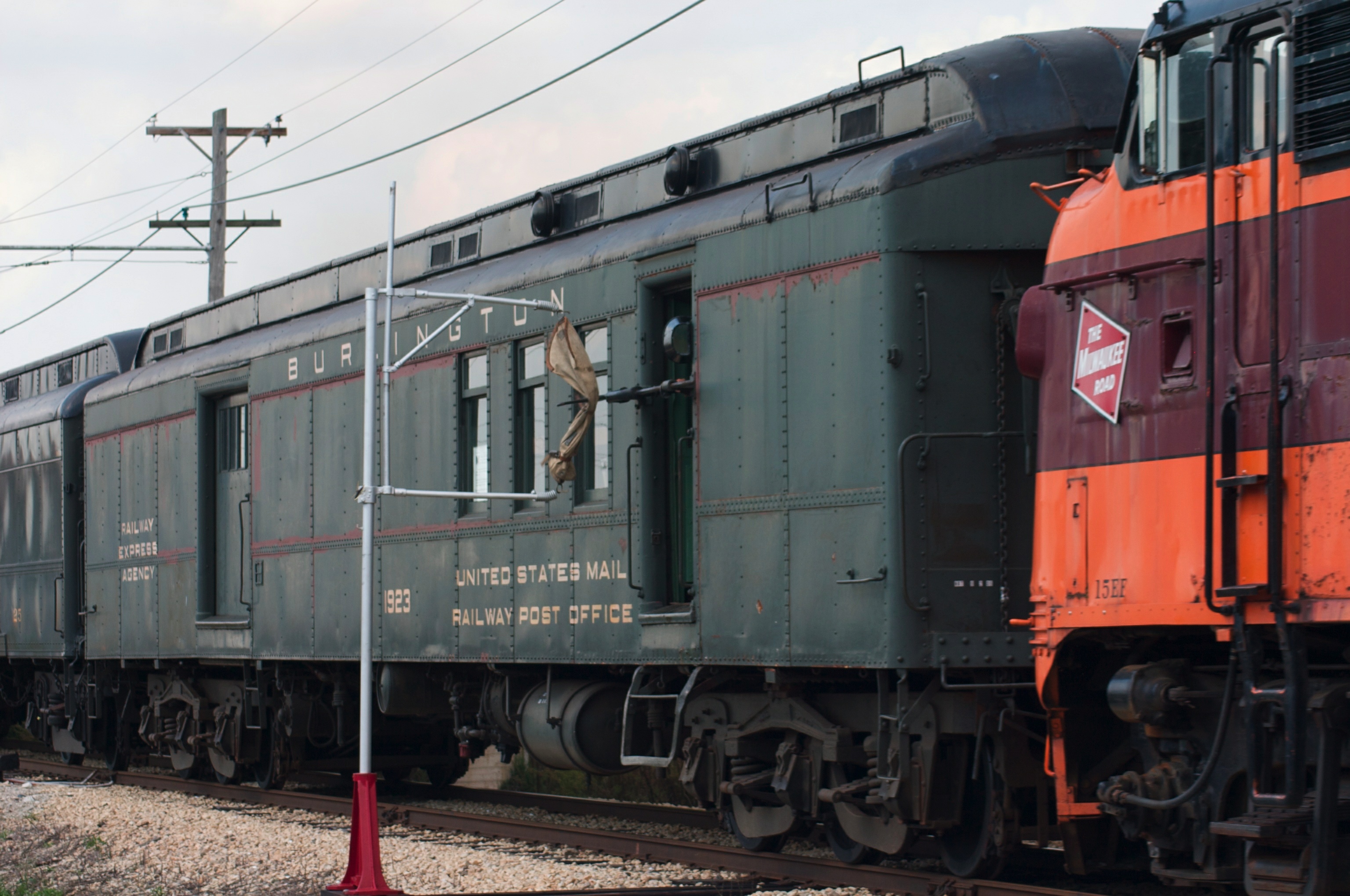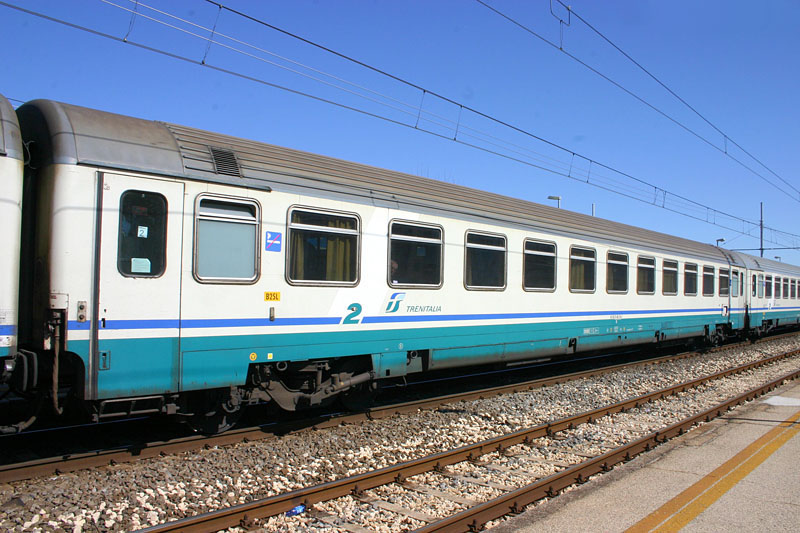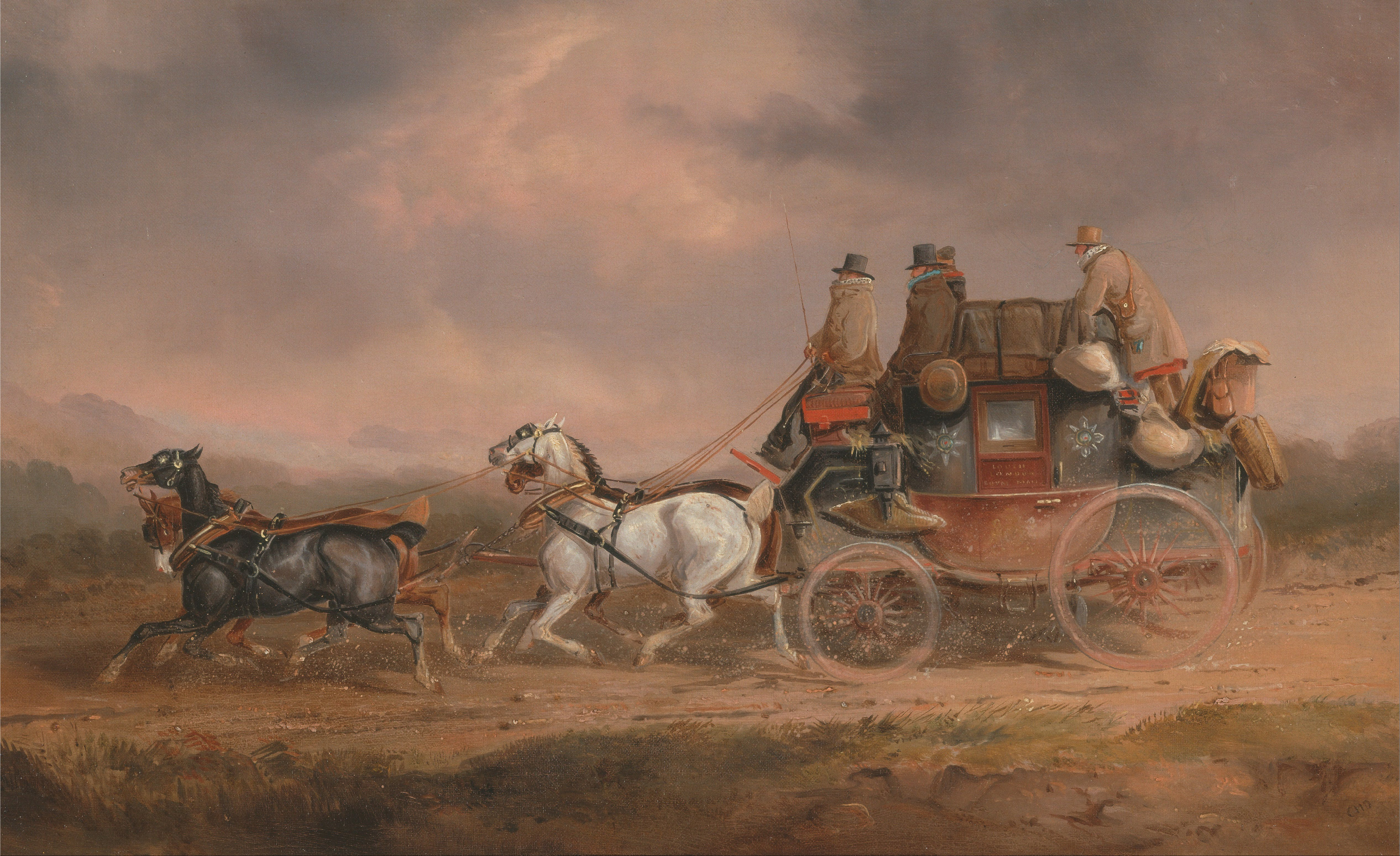|
Coach (rail)
A passenger railroad car or passenger car (United States), also called a passenger carriage, passenger coach (United Kingdom and International Union of Railways), or passenger bogie (India) is a railroad car that is designed to carry passengers. The term ''passenger car'' can also be associated with a sleeping car, a baggage car, a dining car, railway post office and prisoner transport cars. The first passenger cars were built in the early 1800s with the advent of the first railroads, and were small and little more than converted freight cars. Early passenger cars were constructed from wood; in the 1900s construction shifted to steel and later aluminum for improved strength. Passenger cars have increased greatly in size from their earliest versions, with modern bi-level passenger cars capable of carrying over 100 passengers. Amenities for passengers have also improved over time, with developments such as lighting, heating, and air conditioning added for improved passenger com ... [...More Info...] [...Related Items...] OR: [Wikipedia] [Google] [Baidu] |
Auto Train Lounge
Auto may refer to: * An automaton * An automobile * An autonomous car * An automatic transmission * An auto rickshaw * Short for automatic * Auto (art), a form of Portuguese dramatic play * ''Auto'' (film), 2007 Tamil comedy film * Auto (play), a subgenre of dramatic literature * Auto (magazine), an Italian magazine and one of the organizers of the European Car of the Year award * A keyword in the C programming language used to declare automatic variables * A keyword in C++11 used for type inference * Auto (Mega Man), a character from ''Mega Man'' series of games * Auto, West Virginia * Auto, American Samoa Auto is a village in the east of Tutuila Island, American Samoa American Samoa ( sm, Amerika Sāmoa, ; also ' or ') is an unincorporated territory of the United States located in the South Pacific Ocean, southeast of the island country of ... * AUTO, a fictional robot in the 2008 film '' WALL-E'' See also * Otto {{Disambiguation ... [...More Info...] [...Related Items...] OR: [Wikipedia] [Google] [Baidu] |
England
England is a country that is part of the United Kingdom. It shares land borders with Wales to its west and Scotland to its north. The Irish Sea lies northwest and the Celtic Sea to the southwest. It is separated from continental Europe by the North Sea to the east and the English Channel to the south. The country covers five-eighths of the island of Great Britain, which lies in the North Atlantic, and includes over 100 smaller islands, such as the Isles of Scilly and the Isle of Wight. The area now called England was first inhabited by modern humans during the Upper Paleolithic period, but takes its name from the Angles, a Germanic tribe deriving its name from the Anglia peninsula, who settled during the 5th and 6th centuries. England became a unified state in the 10th century and has had a significant cultural and legal impact on the wider world since the Age of Discovery, which began during the 15th century. The English language, the Anglican Church, and Engli ... [...More Info...] [...Related Items...] OR: [Wikipedia] [Google] [Baidu] |
Gangway Connection
A gangway connection (or, more loosely, a corridor connection) is a flexible connector fitted to the end of a railway coach, enabling passengers to move from one coach to another without danger of falling from the train. Origins: Coaches in British and American railways The London and North Western Railway (LNWR) was the first British railway to provide passengers with the means to move from one coach to another while the train was in motion. In 1869 the LNWR built a pair of saloons for the use of Queen Victoria; these had six-wheel underframes (the bogie coach did not appear in Britain until 1874), and the gangway was fitted to only one end of each coach. The Queen preferred to wait until the train had stopped before using the gangway. In 1887, George M. Pullman introduced his patented vestibule cars. Older railroad cars had open platforms at their ends, which were used both for joining and leaving the train, but could also be used to step from one car to the next. This pr ... [...More Info...] [...Related Items...] OR: [Wikipedia] [Google] [Baidu] |
Vestibuled Train
A vestibuled train is a passenger train whose cars have enclosed vestibules at their ends, in contrast to the open platforms on early cars. Typically, a vestibule has doorways on either side to allow passenger entry and exit at stations, a door into the body of the car, and, at the car end, a doorway to allow access to the next car through a flexible gangway connection. History The first vestibuled train was introduced on June 15, 1887, on the inaugural run of the ''Pennsylvania Limited'' of the Pennsylvania Railroad, forerunner of the famous ''Broadway Limited''. The railway car vestibule as a concept had been tried in various primitive forms during the latter part of the 19th century, but the first viable form was invented by H. H. Sessions and his staff at the Pullman Car Works in Chicago. Sessions' patent was challenged by others and reduced in litigation to the spring mechanism of his vestibule design. Further litigation by Pullman was successful in modifying the ear ... [...More Info...] [...Related Items...] OR: [Wikipedia] [Google] [Baidu] |
Bogie
A bogie ( ) (in some senses called a truck in North American English) is a chassis or framework that carries a wheelset, attached to a vehicle—a modular subassembly of wheels and axles. Bogies take various forms in various modes of transport. A bogie may remain normally attached (as on many railroad cars and semi-trailers) or be quickly detachable (as the dolly in a road train or in railway bogie exchange); it may contain a suspension within it (as most rail and trucking bogies do), or be solid and in turn be suspended (as most bogies of tracked vehicles are); it may be mounted on a swivel, as traditionally on a railway carriage or locomotive, additionally jointed and sprung (as in the landing gear of an airliner), or held in place by other means (centreless bogies). In Scotland, the term is used for a child’s (usually home-made) wooden cart. While ''bogie'' is the preferred spelling and first-listed variant in various dictionaries, bogey and bogy are also used. ... [...More Info...] [...Related Items...] OR: [Wikipedia] [Google] [Baidu] |
Chicago And Alton Railroad Pullman Car Interior C 1900
(''City in a Garden''); I Will , image_map = , map_caption = Interactive Map of Chicago , coordinates = , coordinates_footnotes = , subdivision_type = Country , subdivision_name = United States , subdivision_type1 = State , subdivision_type2 = Counties , subdivision_name1 = Illinois , subdivision_name2 = Cook and DuPage , established_title = Settled , established_date = , established_title2 = Incorporated (city) , established_date2 = , founder = Jean Baptiste Point du Sable , government_type = Mayor–council , governing_body = Chicago City Council , leader_title = Mayor , leader_name = Lori Lightfoot ( D) , leader_title1 = City Clerk , leader_name1 = Anna Valencia ( D) , unit_pref = Imperial , area_footnotes = , area ... [...More Info...] [...Related Items...] OR: [Wikipedia] [Google] [Baidu] |
Railway Post Office
In Canada and the United States, a railway post office, commonly abbreviated as RPO, was a railroad car that was normally operated in passenger service as a means to sort mail en route, in order to speed delivery. The RPO was staffed by highly trained Railway Mail Service postal clerks, and was off-limits to the passengers on the train. In the UK and Ireland, the equivalent term was travelling post office (TPO). From the middle of the 19th century, many American railroads earned substantial revenues through contracts with the U.S. Post Office Department (USPOD) to carry mail aboard high-speed passenger trains; and the Railway Mail Service enforced various standardized designs on RPOs. In fact, a number of companies maintained passenger routes where the financial losses from moving people were more than offset by transporting the mail. History The world's first official carriage of mail by rail was by the United Kingdom's General Post Office in November 1830, using adapted ra ... [...More Info...] [...Related Items...] OR: [Wikipedia] [Google] [Baidu] |
Coach (rail)
A passenger railroad car or passenger car (United States), also called a passenger carriage, passenger coach (United Kingdom and International Union of Railways), or passenger bogie (India) is a railroad car that is designed to carry passengers. The term ''passenger car'' can also be associated with a sleeping car, a baggage car, a dining car, railway post office and prisoner transport cars. The first passenger cars were built in the early 1800s with the advent of the first railroads, and were small and little more than converted freight cars. Early passenger cars were constructed from wood; in the 1900s construction shifted to steel and later aluminum for improved strength. Passenger cars have increased greatly in size from their earliest versions, with modern bi-level passenger cars capable of carrying over 100 passengers. Amenities for passengers have also improved over time, with developments such as lighting, heating, and air conditioning added for improved passenger com ... [...More Info...] [...Related Items...] OR: [Wikipedia] [Google] [Baidu] |
Travelling Post Office
A Travelling Post Office (TPO) was a type of mail train used in Great Britain and Ireland where the post was sorted en route. The TPO can be traced back to the earlier days of the railway, the first ever postal movement by rail being performed by the Liverpool and Manchester Railway (L&MR) on 11 November 1830. The Railways (Conveyance of Mails) Act 1838 obligated railway companies to carry mail, and thus specialised rolling stock was quickly provided; the first true TPO emerged that same year. Further innovations followed, such as the development of lineside apparatus for picking up and setting down mailbags while underway, and the use of dedicated mail trains. By 1914, there were 126 TPO carriages in operation throughout the United Kingdom, while numerous other nations had adopted the concept, wholly or in part, as well. During the latter part of the twentieth century, rail mail was subject to various changes. In Britain, Rail Express Systems (RES) was formed during the 198 ... [...More Info...] [...Related Items...] OR: [Wikipedia] [Google] [Baidu] |
Royal Mail
, kw, Postya Riel, ga, An Post Ríoga , logo = Royal Mail.svg , logo_size = 250px , type = Public limited company , traded_as = , foundation = , founder = Henry VIII , location = London, England, UK , key_people = * Keith Williams (Non-executive Chairman) * Simon Thompson (CEO) , area_served = United Kingdom , industry = Postal services, courier , products = , services = Letter post, parcel service, EMS, delivery, freight forwarding, third-party logistics , revenue = £12.638 billion(2021) , operating_income = £611 million (2021) , net_income = £620 million (2021) , num_employees = 158,592 (2021) , parent = , divisions = * Royal Mail * Parcelforce Worldwide , subsid = * General Logistics Systems * eCourier * StoreFeeder * Intersoft Systems & Programming , homepage = , dissolved = , footnotes = International Distributions Services plc (formerly Royal Mail plc), trading as Royal Mail, is a British multinational po ... [...More Info...] [...Related Items...] OR: [Wikipedia] [Google] [Baidu] |
Grand Junction Railway
The Grand Junction Railway (GJR) was an early railway company in the United Kingdom, which existed between 1833 and 1846 when it was amalgamated with other railways to form the London and North Western Railway. The line built by the company was the first trunk railway to be completed in England, and arguably the world's first long-distance railway with steam traction. The lines which comprised the GJR now form the central section of the West Coast Main Line. History The Grand Junction Railway Company was established in the second half of 1832 by the consolidation of two rival companies: the Birmingham and Liverpool Railway Company and the Liverpool and Birmingham Railway Company. Authorised by Parliament on 6 May 1833 and designed by George Stephenson and Joseph Locke, the Grand Junction Railway opened for business on 4 July 1837, running for from Birmingham through Wolverhampton (via Perry Barr and Bescot), Stafford, Crewe, and Warrington, then via the existing Warringto ... [...More Info...] [...Related Items...] OR: [Wikipedia] [Google] [Baidu] |
London And Birmingham Railway
The London and Birmingham Railway (L&BR) was a railway company in the United Kingdom, in operation from 1833 to 1846, when it became part of the London and North Western Railway (L&NWR). The railway line which the company opened in 1838, between London and Birmingham, was the first intercity line to be built into London. It is now the southern section of the West Coast Main Line. The line was engineered by Robert Stephenson. It started at Euston Station in London, went north-west to Rugby, where it turned west to Coventry and on to Birmingham. It terminated at Curzon Street Station, which it shared with the Grand Junction Railway (GJR), whose adjacent platforms gave an interchange with full connectivity (with through carriages) between Liverpool, Manchester and London. History Early plans The railway engineer John Rennie proposed a railway line from London to Birmingham in 1823, and formed a company to build it by a route through Oxford and Banbury, a route later taken ... [...More Info...] [...Related Items...] OR: [Wikipedia] [Google] [Baidu] |








